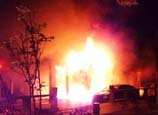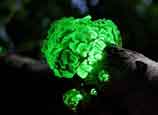
“To be honest, there are no published statistics in China that can prove air pollution is directly related to lung cancer,” Zhong said. He has been concerned about the problem and collecting domestic data.
Zhong cited extreme example that more than 100 in 100,000 suffered from lung cancer in (2005) Xuanwei county, southwest China’s Yunnan province. By 2010, the lung cancer prevalence rate is 76 in 100,000 people in male residents and 48 in 100, 000 in female residents in Beijing.
In 2009, we did a great job in tackling the H1N1 flu. We screened foreign tourists, isolated the patients, and soon we controlled the flu. After detecting genetic sequence of the virus in May, we managed to develop vaccine against H1N1 virus in September. At the beginning of 2010, over 100 million people took the vaccine and the influenza was eliminated.
Zhong said, “We cannot wait until things are out of control. We have seen extreme events like Los Angeles photochemical smog event in 1970, the photochemical smog caused by particles in Japan, and in 1950, more than 5,000 people in London died in four days. Measures should be taken in advance. If such serious hazy day goes on, what would happen in five years or ten years? ”
Zhong added, “In case of battling against SARS, we could take many measures such as isolation, and the way from different aspects. But for air pollution, each of us can’t escape. We can’t get rid of it. We have to bear it when it happens. So it is more fearful to have polluted air than SARS.”
Zhong said the environment is now a key public health concern, which was not the case in the past. However, he warned that the dust-haze will not only impact people's respiratory system but also damage cardiovascular, blood vessel of brain and nervous system.
He told PD Online that when small particulate matter known as PM2.5 increases by 10 micrograms per cubic meter, the hospitalization rate for respiratory diseases rises 3.1 percent. Similarly the daily death rate would climb to 15 percent when the fine particulate matter adds to 200 micrograms according to an observation on the whole development process of 1,100 lung cancer patients for 26 years conducted by U.S. researchers.



Latest development of H7N9 in China[Special]
















 Children in quake-hit areas in Sichuan
Children in quake-hit areas in Sichuan


![]()
